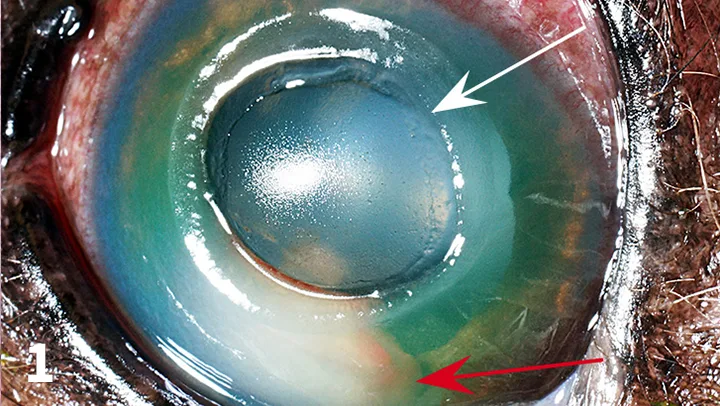Image Gallery: Hypopyon in Dogs
DJ Haeussler, Jr, DVM, MS, DACVO, The Animal Eye Institute, Cincinnati, Ohio
Hypopyon is characterized by the presence of inflammatory cells, particularly leukocytes, in the anterior chamber of the eye and occurs rarely as a result of infectious causes. Hypopyon can lead to secondary glaucoma. Hypopyon is typically treated with anti-inflammatory medications, as it is an accumulation of inflammatory cells. Corneal ulcers, corneal abscesses, uveitis, and systemic illnesses commonly cause hypopyon.

Figure 1 Hypopyon, Descemetocele, Keratoconjunctivitis SiccaA 13-year-old spayed shih tzu with keratoconjunctivitis sicca (KCS) and secondary corneal ulceration with clinical progression to a large descemetocele (white arrow). Hypopyon (red arrow) is visualized in the ventral anterior chamber.
Related ArticlesOphthalmic Examination Made SimpleTop 5 Topical Ocular Anti-Inflammatory & Analgesic Agents